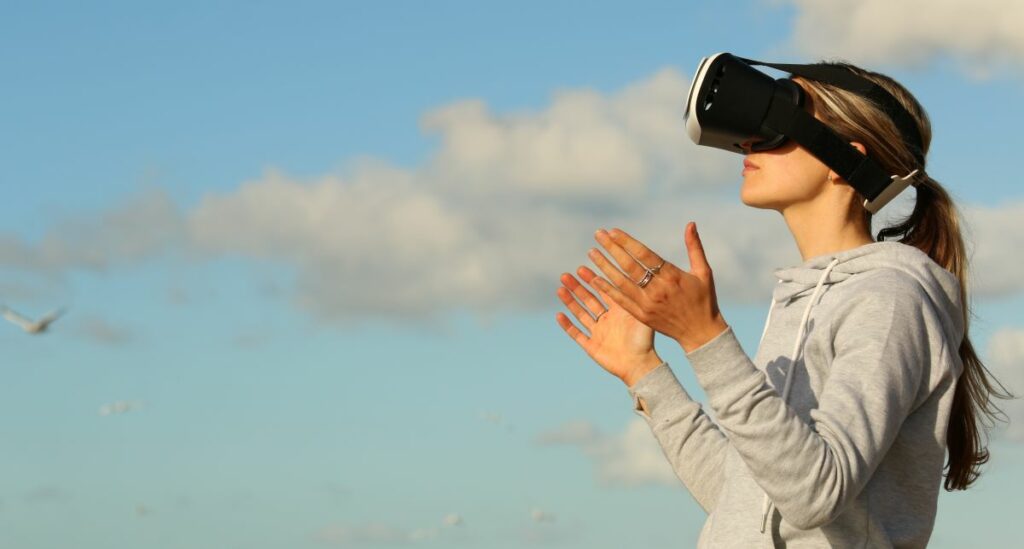As virtual and augmented reality (VR/AR) usage rises among consumers, advertisers are slow to integrate the technology into their campaigns, marketing research firm Advertiser Perceptions has found. According to market data tracker Statista, consumer spending on VR and AR is expected to reach $72 billion by 2024 – and as Advertiser Perceptions notes, everyone with a smartphone already owns an AR-ready device. But just 8 percent of advertisers have a full understanding of the benefits of VR/AR advertising, the research reveals, and only 11 percent fully understand the audience these technologies can reach.
“There’s a lack of general understanding,” says John Bishop, VP, Business Intelligence at Advertiser Perceptions. “For the most part, a lot of people making these decisions are not users of this type of technology and these platforms.” This means agencies have to reach out to AR and VR experts, in order to justify dedicated budgets for the tech, rather than pulling spend from general digital pools. Currently AR/VR budgets sit in a “little nest of money” put aside for niche or experimental trials. And making that investment more mainstream is proving something of a challenge.
A major factor is the absence of case studies, something that came up frequently in the firm’s survey of over 100 advertisers. Respondents said they would find adoption easier if they could point to proven success, measurement and metrics. “If I can’t measure it, it’s much more difficult for me to sell it,” explains Bishop. “If I can see case studies, that look like or similar to what we’re trying to achieve, then I can sell that idea.” Were those findings made available, advertisers would actually see the deployment of AR/VR campaigns driving brand awareness, as reported by those marketers who have embraced the technology.
This marks a contrast with those advertisers yet to deploy the tech, who tend to perceive VR/AR placements as lower-funnel marketing. “Those who have not used it thinks it’s more about, ‘let me go into your property and just kind of be there, and you’re taking us for the ride,” notes Bishop. In reality, AR/VR usage has shown upper-funnel impact on brand engagement, according to Bishop. “We can put our brand in there and actually have an impact on the story, as opposed to the other way around.”
Perception vs (virtual) reality
As it stands, one in five marketers say they are currently using AR/VR, with one in three planning to increase their spend over the next 12 months. But Advertiser Perceptions found that barriers to adoption remain, including a lack of creative capabilities within advertising agencies, particularly those without expertise in the tech itself. “Marketers don’t necessarily have it in house, so they’re looking for experts in the marketplace who can help them develop the tools and carry them through the entire process,” says Bishop.
Advertisers also questioned the technology’s scale and reach, and reported uncertainty around whether campaigns will reach their intended audience. Again this reveals a gap between perception and reality, as those who have used AR/VR have reportedly found success in reaching younger audiences who have traditionally been harder to capture.
One area of AR/VR where advertisers are looking to invest is the metaverse – though the definition of that term is nebulous at best. “When you think metaverse it’s easy to punch up,” comments Bishop. “A lot of the discourse is around Meta, and the technology and optics coming out of their announcements.” But the research showed that 32 percent of marketers are already using some form of metaverse application, and an additional 45 percent plan to do so within the next two years. “So that’s 75 percent of marketers saying within the next few years, we’re expecting those opportunities to grow.”
Overall it is clear from the results that more needs to be done to educate the market on VR/AR advertising, and the responses showed that agencies are open to training in the field by consultants and/or trade bodies. “If trade organisations get behind it, if my peers are doing it, if my competitors are doing it, that’s more likely to get me to move into the space with more confidence,” Bishop says of the findings.





